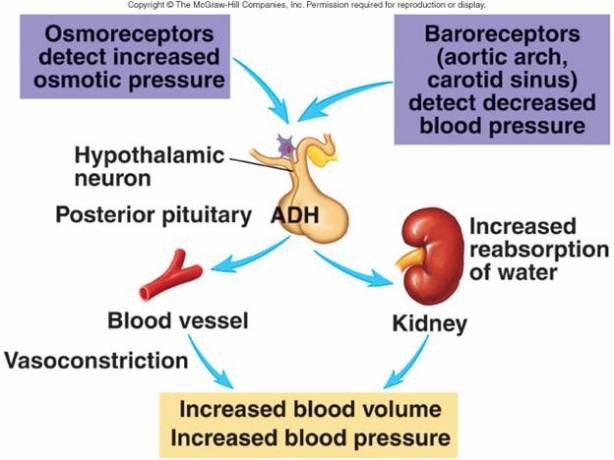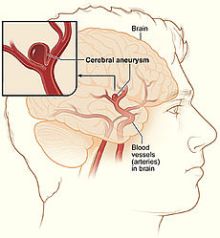Fluid and electrolyte balance plays a vital role in maintaining homeostasis in your body. The main fluid in our body is water and makes up 60% of body weight. In this fluid there are minerals called electrolytes that are contained within the body. These electrolytes are what cells use to maintain voltages across their cell membranes and to carry electrical impulses across themselves and to other cells. Kidneys work to keep the electrolyte concentrations in blood constant despite changes in your body. Fluid intake is controlled by thirst and lost via urine, breathing, through the skin and gut. When fluid and electrolyte balance is impaired or disturbed disease will occur. These disturbances will lead to diseases such as oedema, hyperaemia and congestion, haemorrhage, shock, thrombosis and embolism and ischaemia and infarction.
There are various hormones and mechanisms within the body that maintain fluid balance such as antidiuretic hormone (ADH) hormonal control, glomerular filtration rate, the renin-angiotensin aldosterone mechanism and through atrial natriuretic peptide release in response to atrial dilation. An example of how the body regulates fluid balance can be seen in dehydration or extreme thirst. A person is stranded in the dessert with no water, in order for the body to accommodate the loss of fluid from the extracellular fluid(ECF), the body transfers intracellular fluid(ICF) to the ECF. Antidiuretic hormone (ADH) will also be released to increase the reabsorption of water by the kidneys. Below is a picture that further explains ADH secretion.
During oedema there is the pressure within the blood vessels that pushes fluid out into the extracellular fluid. This causes increased fluid retention and ultimately swelling. It is difficult for the body to overcome oedema and treatment could include the draining of fluid from the body. When my sister was pregnant I noticed that her feet was extremely swollen and when I pressed with my finger on the enlarged area there would be a depression and would take a minute or two to return to its normal shape. It is now that I realize that she had pitting oedema. The swelling occurred because of the excess body fluid created by the baby, however, within a few days after delivery the swelling disappeared. Below is a picture that closely resembles the image that I have in my head of my sisters pitting oedema.
Hyperemia refers to a condition of increased blood flow to a part of the body due to dilation of arteries and arterioles. Congestion refers to a condition where there is reduce venous drainage. Having mentioned these two conditions I am reminded of a very sad incident that occurred two weeks ago. My friends brother was diagnosed with cerebral aneurysm and has been in Acoma for a couple of days. An aneurysm occurs when part of a blood vessel or cardiac chamber swells, either the blood vessel is damaged or there is a weakness in the wall of the blood vessel. Blood pressure then builds up and inflate out at its weakest point. According to the doctors the swelling is large and extends along the blood vessels. The cerebral aneurism burst and caused bleeding in the brain and a hemorrhagic stroke . The doctors are currently trying to drain the blood from his brain. I hope and pray he has a successful operation. Below is a picture showing how his condition occurred.
A good and very intersesting example of how the body strives to survive is in haemorrhage. Haemorrhage is when blood escapes from the blood vessels within the circulatory system and implies that there has been damage to the vessel somehow. In the case of when haemarrhage is caused by trauma by means of a motor bike accident and the person is losing blood rapidly. The persons will initially faint with dilation of the arteries to the muscles, the excessive blood loss will result in loss of consciousness. This loss of consciousness actually helps improve blood flow to the brain and the person will regain consciousness. The heart rate also increases, renin is released, plateletcount can increase causing coagulation and selective peripheral vasoconstriction occurs. These are the normal mechanisms the body undergoes to compensate for blood loss. If the blood loss of the biker is too severe he will go into Hypovolaemic shock.
Thrombosis can be seen as a disease that reacts to a problem and does further damage. Thrombosis is the formation of a blood clot (thrombus) inside a blood vessel, obstructing the flow of blood through the circulatory system. When a blood vessel is injured, the body uses platelets and fibrin to form a blood clot, because the first step in repairing it (hemostasis) is to prevent loss of blood. If that mechanism causes too much clotting, and the clot breaks free, an embolus is formed. The formation of a thrombus is usually caused by Virchow’s triad. To elaborate, the pathogenesis includes: an injury to the vessel’s wall; by the slowing or stagnation of blood flow past the point of injury which may occur after long periods of sedentary behavior,for example, sitting on a long airplane flight; by a blood state of hypercoagulability, caused for example, by genetic deficiencies or autoimmune disorders.
In conclusion, it is amazing how our bodies react to threats and how mechanisms are in place to counter act those threats to maintain homeostasis. The process of homoestasis in regards to fluid balance is very intricate and the body has many processes to help protect and maintain the balance if it is disturbed. By reading through all these chapters I come to appreciate my body and all the mechanisms that come along with it as our bodies are truly machines that strive to survive.
References
Rippey, F F. (2012) ‘General Pathology’, Johannesburg, Witwatersrand University Press.
Martini and Nath. (2009) ‘Anatomy & Physiology’, San Francisco, Pearson Education.
Medicineplus, 2013. Fluid and Electrolyte Imbalance. [online] Available at: www.nlm.nih.gov [Accessed 24 March 2013]
News Medical, 2013. What is Thrombosis. [online] Available at: www.news-medical.net/health/What-is-Thrombosis.aspx [Accessed 24 March 2013]



